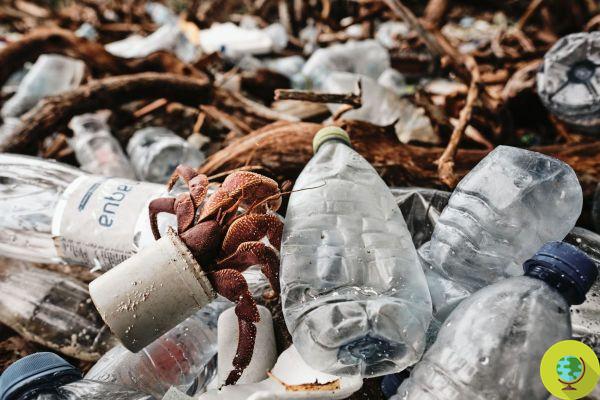
Hermit crabs are attracted to oleamide, an additive used in plastic processing and which indicates the presence of food to them.
He is about to end up run over, his mother saves himIn a recent study, i paguri have been shown to be attracted to an additive found in plastic waste. This is theoleamide, a natural organic compound used as an additive in the processing of plastics which, in some marine animals, has a stimulating effect.
When plastic ends up in the oceans, slowly degrades releasing countless substances into the water, including oleamide, a known pheromone for some species including crabs, shrimp and shrimp.
Read also: Microplastics are now present in 90% of Ireland's protected marine environments. I study.
The study, carried out by a team from the University of Hull, found that the oleamide in hermit crabs causes increased respiration, an index of attraction and excitement. In practice, the oleamide works as a recall for mating or for looking for food.
Why do hermit crabs find this compound attractive? According to the researchers, there are several causes behind this behavior, including acidification of the water. Changes in pH damage the sense of smell of marine animals, and if the olfactory capacity is impaired, it is easy for them to confuse one substance with another.
The structure of the oleamide resembles that of oleic acid. The presence of this substance could therefore indicate to hermit crabs presence of food, misleading them. It is a phenomenon that also occurs with other substances released from plastic and represents a danger for hermit crabs, as crabs, shrimps and other species could ingest more easily plastic waste For error.
The presence of oleamide and other compounds that attract marine animals can also interfere with the reproduction, compromising it.
According to the researchers, the increase in plastic waste, coupled with acidification of water and rising temperatures is having a dramatic impact on marine animals and the results of this new study are just another confirmation.
Follow us on Telegram | Instagram | Facebook | TikTok | Youtube
Sources of reference: University of Hull
Read also:
- Plastic fish: Microplastics are found in 83% of Bangladeshi fish
- Unfortunately, oysters are becoming greedy for microplastics due to the bacteria that settle on them
- Microplastics: Long-term ingestion damages the growth and reproduction of fish


























